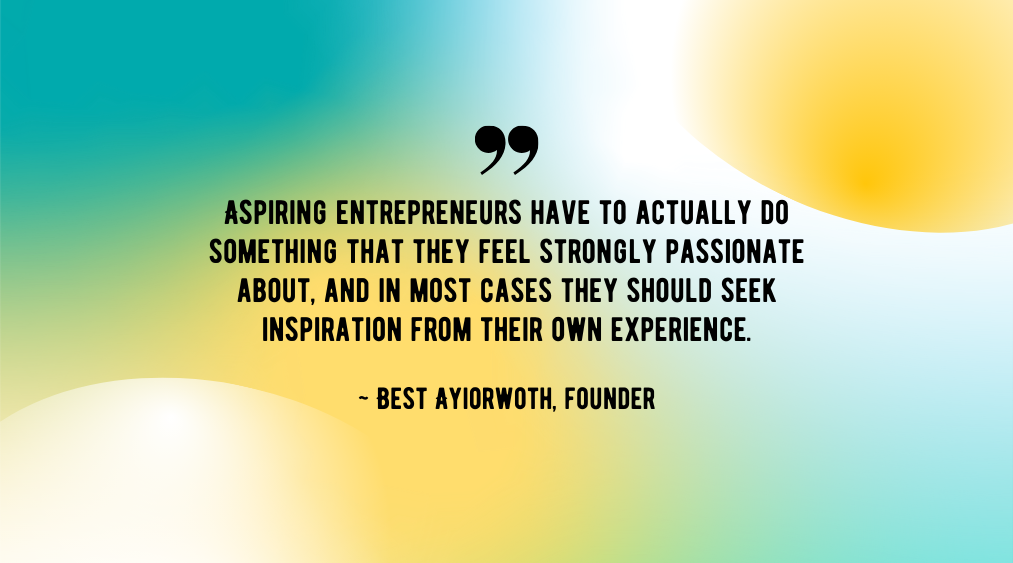
Every successful business starts with an idea, but where do these ideas come from? For every aspiring entrepreneur, the concept behind an idea is important to ensure it is winning on paper. If it’s not winning, why are we wasting time developing the concept? Hence, we need to conceptualize our idea into a solid winning idea. We can do that by turning everyday observations, challenges, and opportunities into winning ideas with good concepts!
This article will explore 10 inspiring ways to conceptualize business ideas. Whether you’re looking to solve a problem, disrupt an industry, or create a niche market, these strategies can help you unlock your entrepreneurial potential.
Contents
- 1. Solving a Problem
- 2. Disrupting a Distribution Model
- 3. Exploring New Market Opportunities
- 4. Innovating Business Models
- 5. Leveraging Technology and Innovation
- 6. Franchising and Replicating Success
- 7. Focusing on Sustainability and Social Impact
- 8. Combining Industries or Products
- 9. Personalizing Products or Services
- 10. Creating a Niche Market
- Final Thoughts
1. Solving a Problem

Concept:
The easiest and most common way to conceptualize a business idea is by identifying a problem and creating a solution. Problem always presents a market need for a solution, if you are the one solving, then your solution should sell by itself.
Examples:
- Airbnb: Solved the problem of expensive hotel rooms and limited lodging options by allowing people to rent out their homes.
- Uber: Addressed the difficulty of finding reliable and affordable transportation by connecting riders with drivers through an app.
How to Apply This:
- Look for everyday frustrations or inefficiencies in your life or industry.
- Asking the right question: “What problem do I wish someone would solve?”
- Research existing solutions and identify gaps or areas for improvement.
2. Disrupting a Distribution Model
Concept:
Some businesses succeed by changing how products or services are delivered to customers. Especially with the advancement of technologies, the old distribution model will always get disrupted with new, efficient, and better ways of distributing products or services.
Examples:
- Grab: Disrupted the traditional taxi industry by creating a ride-hailing platform that connects drivers and passengers directly.
- Netflix: Changed the distribution model for entertainment by shifting from DVD rentals to streaming.
How to Apply This:
- Analyze existing industries and identify inefficiencies in their distribution models.
- Think about how technology or new approaches can streamline the process.
3. Exploring New Market Opportunities
Concept:
Business ideas can emerge from identifying untapped or underserved markets or expanding into new regions.
Examples:
- Alibaba: Recognized the potential of e-commerce in China and built a platform tailored to the local market.
- Beyond Meat: Identified the growing demand for plant-based protein and created a new market for meat alternatives.
How to Apply This:
- Research emerging trends and consumer behavior shifts.
- Look for underserved or overlooked markets.
4. Innovating Business Models
Concept:
Some businesses succeed by rethinking how value is created and delivered. Consumer consumption behavior will definitely shift for better value.
Examples:
- Subscription Models: Companies like Dollar Shave Club and HelloFresh disrupted traditional retail by offering subscription-based services.
How to Apply This:
- Analyze existing industries and think about how you can change the way value is delivered.
- Explore alternative revenue streams, such as subscriptions or licensing.
5. Leveraging Technology and Innovation

Concept:
Technology can be a powerful driver of business ideas, enabling new products, services, and experiences.
Examples:
- Zoom: Capitalized on the need for reliable video conferencing tools, especially during the COVID-19 pandemic.
- Slack: Revolutionized workplace communication by creating a platform integrating messaging, file sharing, and collaboration tools.
How to Apply This:
- Stay updated on technological advancements and their potential applications.
- Consider how emerging technologies (e.g., AI, blockchain, IoT) can solve problems or create new opportunities.
6. Franchising and Replicating Success
Concept:
Franchising allows entrepreneurs to replicate a proven business model in new locations or markets.
Examples:
- McDonald’s: Built a global empire by franchising its fast-food model.
- 7-Eleven: Expanded worldwide by offering franchise opportunities to local entrepreneurs.
How to Apply This:
- Research successful businesses that offer franchising opportunities.
- Consider how you can adapt a proven model to your local market.
7. Focusing on Sustainability and Social Impact

Concept:
Create businesses that address environmental or social challenges. Building sustainable products or solving social challenges, for instance, the aging population, could present great opportunities for entrepreneurs.
Examples:
- Patagonia: Built a brand around environmental sustainability.
- TOMS Shoes: Donated a pair of shoes for every pair sold.
How to Apply This:
- Identify pressing social or environmental issues.
- Think about how your business can make a positive impact.
8. Combining Industries or Products
Concept:
Merge and create synergy for two unrelated industries or products to create something new.
Examples:
- GoPro: Combined cameras with extreme sports to create action cameras.
- Fitbit: Merged fitness tracking with wearable technology.
How to Apply This:
- Look for opportunities to combine trends or technologies.
- Think outside the box and explore unconventional pairings.
9. Personalizing Products or Services
Concept:
Personalization delivers new emotional experiences. Offer customized solutions to meet individual customer emotional needs.
Examples:
- Nike By You: Allows customers to design their sneakers.
- Stitch Fix: Personalizes clothing selections based on customer preferences.
How to Apply This:
- Identify industries where personalization is lacking.
- Use data and technology to create tailored experiences.
10. Creating a Niche Market
Concept:
Targeting a niche market can be a profitable idea. Focus on a specific, underserved segment of the market.
Examples:
- Lush: Targets eco-conscious consumers with handmade, ethical cosmetics.
- Glossier: Built a beauty brand focused on minimalism and inclusivity.
How to Apply This:
- Identify niche markets with unique needs or preferences.
- Develop products or services that cater specifically to them.
Final Thoughts
Conceptualizing business ideas doesn’t have to be daunting. We need to stay curious at all times and ask the right questions. With these 10 inspiring strategies, it can provide you a perspective on the approach to build out your next profitable idea. Many opportunities exist to solve problems, disrupt industries, and create innovative solutions. Whether drawn to sustainability, technology, or niche markets, the key is to start small, stay curious, and take action.

